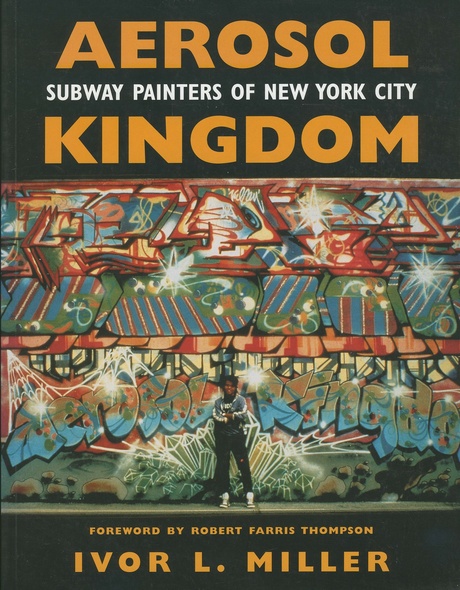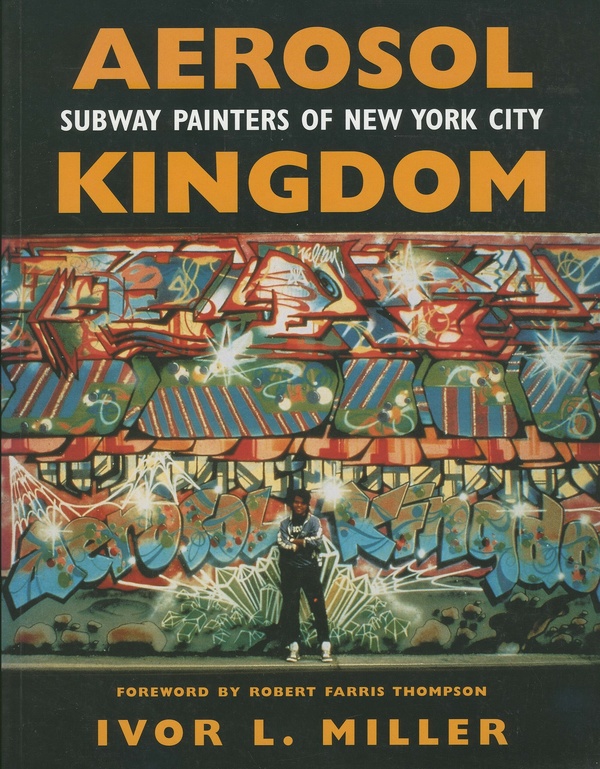
Aerosol Kingdom
Subway Painters of New York City
Hailed as the seminal study of spray can art of the 1970s and 1980s, Aerosol Kingdom explores the origins and aesthetics of graffiti writings.
From a vast array of inherited traditions and gritty urban lifestyles, talented and renegade young New Yorkers spawned a culture of their own, a balloon-lettered shout heralding the coming of hip-hop. Though helpless in checking its spreading appeal, city fathers immediately went on the attack and denounced it as vandalism. Many aficionados, however, recognized its trendy aesthetic immediately. By the 1980s, spray-paint art hit the mainstream, and subway painters, mostly from marginal barrios of the city, became art world darlings. Their proliferating, ephemeral art was spotlighted in downtown galleries, in the media, and thereafter throughout the land. Not only did the practice of “public signaturing” take over New York City, but also, as the images moved through the neighborhoods on the subway cars, it also grabbed hold in the suburbs. Soon it stirred worldwide imitation and helped spark the hip-hop revolution.
As the artists wielded their spray cans, they expressed their acute social consciousness. Aerosol Kingdom documents their careers and records the reflections of key figures in the movement. It examines converging forces that made aerosol art possible—the immigration of Caribbean peoples, the reinforcing presence of black American working-class styles and fashions, the effects of advertising on children, the mass marketing of spray cans, and the popular protests of the 1960s and 1970s against racism, sexism, classism, and war.
The creative period of the movement lasted for over twenty years, but most of the original works have vanished. Official cleanup of public sites erased great pieces of the heyday. They exist now only in photographs, in the artists’ sketchbooks, and in Aerosol Kingdom.
Ivor L. Miller is senior lecturer in the Department of History and International Studies at the University of Calabar, Cross River State, Nigeria. He also holds a research fellowship from the African Studies Center at Boston University and is author of Voice of the Leopard: African Secret Societies and Cuba and coeditor (with P. González Gómes-Cásseres) of The Sacred Language of the Abakuá, both published by University Press of Mississippi.




